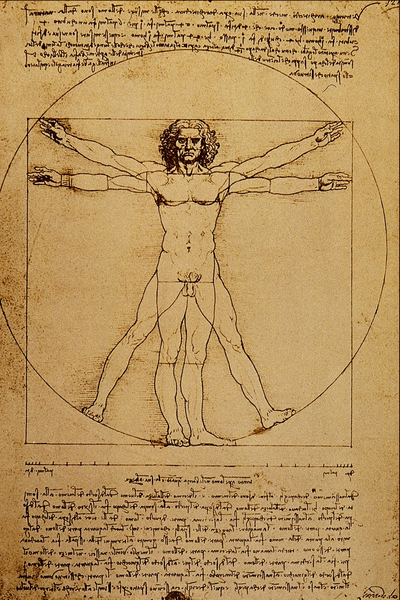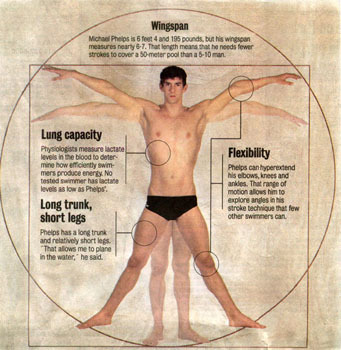Ape index
The Monkey Index or English Ape Index is an anthropometric measure, which establishes a relationship between arm span and height of a person. Although the term originated in the unscientific sport climbing scene, you can find it now in the scientific literature.
Calculation
For the calculation of the index, the monkeys body height and arm span which must be measured. The arm span is defined as the distance between the endpoints of the middle finger at the side horizontally weggestreckten arms and fingers.
For the calculation itself, there are two different approaches:
- The more common and used in scientific work method defines the ape index by dividing arm span by body height.
- After a few websites that deal with the climbing, the Monkey Index is determined by subtracting by the body height is subtracted from the arm span.
A positive ape index is given when the arm span exceeds the body height. This is demonstrated greater than one in the subtraction of a positive number and the division method to a number. Falls below the arm span to body height, the result is in the subtraction is a negative number and smaller in the division method as a number one. Are arm span and height equal, this results in an ape index from zero at the one or subtraction for the division method.
Properties of the Monkey Index
In adults, there is a correlation between arm length and body height. The average monkeys index number is close to the neutral index number, that is, the right arm span almost the same as the body height. This finding is supported by the German climbers survey, which yielded a calculated by the division method average ape index of 1.02. A study conducted on a large number Koreans study found that at small adult monkeys index mostly negative, in contrast bodied grown is rather positive. It is therefore not surprising that athletes with extremely large and high Armspannweiten monkeys Index numbers are often very large: are examples:
- The swimmer Michael Phelps with a body height of 195 cm and an arm span of 204 cm ( Division Method: 1.046 )
- The discus thrower Lars Riedel with a body height of 199 cm and an arm span of 210 cm ( Division Method: 1.055 )
- The basketball player Misan Nikagbatse with a body height of 192 cm and an arm span of 208 cm ( Division Method: 1.083 )
The above-mentioned extensive Korean study also looked at the change of various body measurements - including with the monkey index, but without using the term monkey Index - over the course of child development to over 10,000 children and came to the conclusion that this monkey Index regardless of sex with age is positive. In addition, provided the scientists found that apply to adolescents, the same trends as for adults: their peers older children have a more positive ape index.
Influence on the climbing performance
Under climbers is often assumed that the highest possible number of monkeys index affects the climbing performance positively. This is based on the consideration that the same body size longer arms are better because they allow for greater gripping range. However, this assumption ignores the fact that in the longer arms leverage ratios may be unfavorable and that the range also depends on the body height itself. A larger climber can therefore despite a smaller monkeys index number a significantly larger gripping range have as a small climber with larger monkeys index.
Several studies showed that no significant correlation between the index and the monkey is climbing performance. Even with the maximum achievable distance between two handles in dynamic climbing trains neither the index nor the monkeys body height has a significant influence. According to current knowledge, there is no reason to start from an influence of the Apes index number on the climbing performance.










